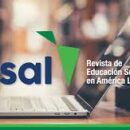Higher Education Trends, Opportunities, and Challenges in 2022
Trends impacting higher education organizations are expected to create both opportunities and challenges in 2022 and beyond.
Those trends include revenue growth, tuition increases, and cost-cutting. Tuition increases also affect the competition between community colleges, colleges, and universities.

Revenue Growth
Colleges and universities are projected to see slower revenue growth through 2027.
Related Trends
This slower growth could lead to a few changes in direction.
Retention Rates
The labor market is expected to expand which could discourage people from starting or staying in school. Combined with a stagnant high school retention rate, college enrollment is expected to decelerate.
Online Education
Growth in online education could enable colleges to serve more nontraditional students at lower costs. Online courses may increase interest in industry institutions, boosting enrollment and revenue.
Appropriations
State and local appropriations are poised to grow as unemployment likely declines and the government recovers lost tax revenue.
Tuition and Community Colleges
Continued tuition increases could make it more difficult for some students to pursue higher education.
As a result of the trends below, the number of colleges and universities will likely increase an annualized 1% to 2,120 enterprises over the next five years.
Rising tuition costs could change students’ plans for their educations.
Student Loans
While the federal government took steps to increase student loan availability, the rising cost of a four-year college education could steer students toward more affordable options.
That could lead to competition from community colleges and trade schools. The federal government has taken measures to support these institutions.
Competition
Competition from community colleges will likely remain moderate as traditional colleges and universities dominate the higher education market.
Because many students transfer to a four-year institution after completing two years at a community college, lower tuition for community colleges may ultimately result in higher demand for industry institutions.
Cutting Costs
According to IBIS World, industry employment is projected to increase an annualized 1.2% to 3.3 million workers over five years. Additionally, the transition to relatively inexpensive forms of labor is expected to bolster industry profit over the coming years.
However, industry institutions operate on a not-for-profit basis, and colleges and universities could continue to cut costs to bolster the long-term sustainability of higher education.
Consolidation
Universities are expected to merge redundant departments and courses to reduce administrative costs.
Tenured Versus Part-time Positions
The number of tenure-track positions, which typically have higher salaries, will also likely be reduced. Instead, industry institutions could continue to hire part-time lecturers and nontenured professors at lower wages.
Institutions will also likely further implement online education programs to lower costs and compete with community colleges and for-profit universities.
Online education reduces costs because classrooms aren’t required and a small number of professors can instruct a substantial number of students. By increasing the number of courses available online, universities could reach new markets.
Massive Open Online Courses (MOOC)
Start-ups that provide a platform for universities to offer online courses could continue to gain traction over the coming years.
While some MOOC services may pull students away from traditional universities by offering free and low-cost education services, traditional universities provide benefits not found in online education services such as access to professors, contact with peers, and accreditation from an established institution.
These factors limit direct competition between industry institutions and MOOC services. While MOOCs and similar online education services could make higher education more accessible, they aren’t expected to significantly reduce demand for industry services.
Future Opportunities and Challenges
Based on the above trends, higher education organizations could face several challenges over the next two to three years. However, there are several opportunities as well.
Opportunities
- Mergers and acquisitions (M&A). Mergers, acquisitions , alliances, and consortiums are becoming commonplace. Small, faith-based institutions are a prime target for acquisitions. Many institutions are aligning with other colleges or universities to share services such as digital platforms to save on costs.
- Personal wealth and market performance. Institutions for fiscal year-end (FYE) 2021 posted record market performance and endowments, and investments pools are at all-time highs providing purchasing and institutional aid power.
- Federal and state funding. Public and private schools will continue to see infusions of government funding. The Biden administration seeks affordable college and free community college for all. Conversely, as funding increases in the public sector, the private sector will continue to feel pressure to compete and keep tuition rates low.
- Construction. As institutions emerge from the COVID-19 pandemic and lockdowns, they’ll likely move forward with campus expansions and deferred maintenance plans.
- Digital transformations. Many institutions transformed their digital programs due to COVID-19. Some schools outside of major East or West Coast cities are using hybrid models. Many students and faculty prefer a return to campus and in-person learning, however.
- Inflation. Personnel costs are a major operating expense in higher education and will have a great impact as they rise. Cost-of-living adjustments face double-digit growth. The increased cost of goods, especially construction materials, will delay capital expansion and deferred maintenance.
- Workforce shortages. The shortage of personnel and availability of candidates in the workforce will drive costs up. Baby boomers are retiring at record rates. Additionally, the shortages will create an inability to deliver services to students. Also, those shortages could prevent institutions from effectively implementing strategic plans.
- Compliance and regulations. Continued and increased compliance and state and federal regulations on higher education are driving overhead and personnel costs up.
We’re Here to Help
For guidance on how to take advantage of opportunities or overcoming challenges for your organization, contact your Moss Adams professional. You can also visit our Higher Education Practice for related articles.
Assurance, tax, and consulting offered through Moss Adams LLP. ISO/IEC 27001 services offered through Cadence Assurance LLC, a Moss Adams company. Wealth management offered through Moss Adams Wealth Advisors LLC. Services from India provided by Moss Adams (India) LLP.
Contact Us with Questions
4 trends that will shape the future of higher education

Higher education needs to address the problems it faces by moving towards active learning, and teaching skills that will endure in a changing world. Image: Vasily Koloda for Unsplash
.chakra .wef-1c7l3mo{-webkit-transition:all 0.15s ease-out;transition:all 0.15s ease-out;cursor:pointer;-webkit-text-decoration:none;text-decoration:none;outline:none;color:inherit;}.chakra .wef-1c7l3mo:hover,.chakra .wef-1c7l3mo[data-hover]{-webkit-text-decoration:underline;text-decoration:underline;}.chakra .wef-1c7l3mo:focus,.chakra .wef-1c7l3mo[data-focus]{box-shadow:0 0 0 3px rgba(168,203,251,0.5);} Diana El-Azar

.chakra .wef-9dduvl{margin-top:16px;margin-bottom:16px;line-height:1.388;font-size:1.25rem;}@media screen and (min-width:56.5rem){.chakra .wef-9dduvl{font-size:1.125rem;}} Explore and monitor how .chakra .wef-15eoq1r{margin-top:16px;margin-bottom:16px;line-height:1.388;font-size:1.25rem;color:#F7DB5E;}@media screen and (min-width:56.5rem){.chakra .wef-15eoq1r{font-size:1.125rem;}} Education is affecting economies, industries and global issues

.chakra .wef-1nk5u5d{margin-top:16px;margin-bottom:16px;line-height:1.388;color:#2846F8;font-size:1.25rem;}@media screen and (min-width:56.5rem){.chakra .wef-1nk5u5d{font-size:1.125rem;}} Get involved with our crowdsourced digital platform to deliver impact at scale
Stay up to date:.
Listen to the article
- Measures adopted during the pandemic do not address the root causes of the problems facing higher education.
- Institutions need to undertake true reform, moving towards active learning, and teaching skills that will endure in a changing world.
- Formative assessment is more effective than high-stakes exams in equipping students with the skills they need to succeed.
Since the onset of the recent pandemic, schools and universities have been forced to put a lot of their teaching online. On the surface, this seems to have spurred a series of innovations in the education sector. Colleges around the world embraced more flexibility, offering both virtual and physical classrooms. Coding is making its way into more school curricula , and the SAT exam for college admission in the US has recently been shortened and digitized , making it easier to take and less stressful for students.
These changes might give the illusion that education is undergoing some much-needed reform. However, if we look closely, these measures do not address the real problems facing higher education. In most countries, higher education is inaccessible to the socio-economically underprivileged, certifies knowledge rather than nurtures learning, and focuses on easily-outdated knowledge. In brief, it is failing on both counts of quality and access.
Have you read?
Four ways universities can future-proof education, the global education crisis is even worse than we thought. here's what needs to happen, covid-19’s impact on jobs and education: using data to cushion the blow, higher education trends.
In the last year, we have started to see examples of true reform, addressing the root causes of the education challenge. Below are four higher education trends we see taking shape in 2022.
1. Learning from everywhere
There is recognition that as schools and universities all over the world had to abruptly pivot to online teaching, learning outcomes suffered across the education spectrum . However, the experiment with online teaching did force a reexamination of the concepts of time and space in the education world. There were some benefits to students learning at their own pace, and conducting science experiments in their kitchens . Hybrid learning does not just mean combining a virtual and physical classroom, but allowing for truly immersive and experiential learning, enabling students to apply concepts learned in the classroom out in the real world.
So rather than shifting to a “learn from anywhere ” approach (providing flexibility), education institutions should move to a “learn from everywhere ” approach (providing immersion). One of our partners, the European business school, Esade, launched a new bachelor’s degree in 2021, which combines classes conducted on campus in Barcelona, and remotely over a purpose-designed learning platform, with immersive practical experiences working in Berlin and Shanghai, while students create their own social enterprise. This kind of course is a truly hybrid learning experience.
2. Replacing lectures with active learning
Lectures are an efficient way of teaching and an ineffective way of learning. Universities and colleges have been using them for centuries as cost-effective methods for professors to impart their knowledge to students.
However, with digital information being ubiquitous and free, it seems ludicrous to pay thousands of dollars to listen to someone giving you information you can find elsewhere at a much cheaper price. School and college closures have shed light on this as bad lectures made their way into parents’ living rooms, demonstrating their ineffectiveness.
Education institutions need to demonstrate effective learning outcomes, and some are starting to embrace teaching methods that rely on the science of learning. This shows that our brains do not learn by listening, and the little information we learn that way is easily forgotten (as shown by the Ebbinghaus forgetting curve , below). Real learning relies on principles such as spaced learning, emotional learning, and the application of knowledge.

The educational establishment has gradually accepted this method, known as 'fully active learning'. There is evidence that it not only improves learning outcomes but also reduces the education gap with socio-economically disadvantaged students. For example, Paul Quinn College, an HBCU based in Texas, launched an Honors Program using fully active learning in 2020, combined with internships at regional employers. This has given students from traditionally marginalised backgrounds the opportunity to apply the knowledge gained at university in the real world.
3. Teaching skills that remain relevant in a changing world
According to a recent survey, 96% of Chief Academic Officers at universities think they are doing a good job preparing young people for the workforce . Less than half (41%) of college students and only 11% of business leaders shared that view. Universities continue to focus on teaching specific skills involving the latest technologies, even though these skills and the technologies that support them are bound to become obsolete. As a result, universities are forever playing catch up with the skills needed in the future workplace.
What we need to teach are skills that remain relevant in new, changing, and unknown contexts. For example, journalism students might once have been taught how to produce long-form stories that could be published in a newspaper; more recently, they would have been taught how to produce shorter pieces and post content for social media. More enduring skills would be: how to identify and relate to readers, how to compose a written piece; how to choose the right medium for your target readership. These are skills that cross the boundaries of disciplines, applying equally to scientific researchers or lawyers.
San Francisco-based Minerva University, which shares a founder with the Minerva Project, has broken down competencies such as critical thinking or creative thinking into foundational concepts and habits of mind . It teaches these over the four undergraduate years and across disciplines, regardless of the major a student chooses to pursue.

4. Using formative assessment instead of high-stake exams
If you were to sit the final exam of the subject you majored in today, how would you fare? Most of us would fail, as that exam did not measure our learning, but rather what information we retained at that point in time. Equally, many of us hold certifications in subject matters we know little about.
Many people gain admission to higher education based on standardized tests that skew to a certain socio-economic class , rather than measure any real competency level. Universities then try to rectify this bias by imposing admission quotas, rather than dissociating their evaluation of competence from income level. Many US universities are starting to abandon standardized tests, with Harvard leading the charge , and there have been some attempts to replace high-stake exams with other measures that not only assess learning outcomes but actually improve them.
Formative assessment, which entails both formal and informal evaluations through the learning journey, encourages students to actually improve their performance rather than just have it evaluated. The documentation and recording of this assessment includes a range of measures, replacing alphabetical or numerical grades that are uni-dimensional.
The COVID-19 pandemic and recent social and political unrest have created a profound sense of urgency for companies to actively work to tackle inequity.
The Forum's work on Diversity, Equality, Inclusion and Social Justice is driven by the New Economy and Society Platform, which is focused on building prosperous, inclusive and just economies and societies. In addition to its work on economic growth, revival and transformation, work, wages and job creation, and education, skills and learning, the Platform takes an integrated and holistic approach to diversity, equity, inclusion and social justice, and aims to tackle exclusion, bias and discrimination related to race, gender, ability, sexual orientation and all other forms of human diversity.

The Platform produces data, standards and insights, such as the Global Gender Gap Report and the Diversity, Equity and Inclusion 4.0 Toolkit , and drives or supports action initiatives, such as Partnering for Racial Justice in Business , The Valuable 500 – Closing the Disability Inclusion Gap , Hardwiring Gender Parity in the Future of Work , Closing the Gender Gap Country Accelerators , the Partnership for Global LGBTI Equality , the Community of Chief Diversity and Inclusion Officers and the Global Future Council on Equity and Social Justice .
The International School in Geneva just launched its Learner Passport that includes measures of creativity, responsibility and citizenship. In the US, a consortium of schools have launched the Mastery Transcript Consortium that has redesigned the high school transcript to show a more holistic picture of the competencies acquired by students.
Education reform requires looking at the root cause of some of its current problems. We need to look at what is being taught (curriculum), how (pedagogy), when and where (technology and the real world) and whom we are teaching (access and inclusion). Those institutions who are ready to address these fundamental issues will succeed in truly transforming higher education.
Don't miss any update on this topic
Create a free account and access your personalized content collection with our latest publications and analyses.
License and Republishing
World Economic Forum articles may be republished in accordance with the Creative Commons Attribution-NonCommercial-NoDerivatives 4.0 International Public License, and in accordance with our Terms of Use.
The views expressed in this article are those of the author alone and not the World Economic Forum.
Related topics:
The agenda .chakra .wef-n7bacu{margin-top:16px;margin-bottom:16px;line-height:1.388;font-weight:400;} weekly.
A weekly update of the most important issues driving the global agenda
.chakra .wef-1dtnjt5{display:-webkit-box;display:-webkit-flex;display:-ms-flexbox;display:flex;-webkit-align-items:center;-webkit-box-align:center;-ms-flex-align:center;align-items:center;-webkit-flex-wrap:wrap;-ms-flex-wrap:wrap;flex-wrap:wrap;} More on Education and Skills .chakra .wef-nr1rr4{display:-webkit-inline-box;display:-webkit-inline-flex;display:-ms-inline-flexbox;display:inline-flex;white-space:normal;vertical-align:middle;text-transform:uppercase;font-size:0.75rem;border-radius:0.25rem;font-weight:700;-webkit-align-items:center;-webkit-box-align:center;-ms-flex-align:center;align-items:center;line-height:1.2;-webkit-letter-spacing:1.25px;-moz-letter-spacing:1.25px;-ms-letter-spacing:1.25px;letter-spacing:1.25px;background:none;padding:0px;color:#B3B3B3;-webkit-box-decoration-break:clone;box-decoration-break:clone;-webkit-box-decoration-break:clone;}@media screen and (min-width:37.5rem){.chakra .wef-nr1rr4{font-size:0.875rem;}}@media screen and (min-width:56.5rem){.chakra .wef-nr1rr4{font-size:1rem;}} See all

Shaping the Future of Learning: The Role of AI in Education 4.0

The future of learning: How AI is revolutionizing education 4.0
Tanya Milberg
April 28, 2024

Strategic Cybersecurity Talent Framework

What helped this founder pivot and help modernize the largest transit system in the US?
Johnny Wood and Linda Lacina
April 25, 2024

Why we need global minimum quality standards in EdTech
Natalia Kucirkova
April 17, 2024

How we can prepare for the future with foundational policy ideas for AI in education
TeachAI Steering Committee
April 16, 2024

The New Equation

Executive leadership hub - What’s important to the C-suite?

Tech Effect

Shared success benefits
Loading Results
No Match Found
The state of higher education: Challenges and opportunities in 2023
Perspectives in higher education.
In an increasingly competitive and complex environment, management and trustees of higher education institutions are facing a growing number of issues that require attention. As colleges and universities emerge from their intense focus on the COVID-19 pandemic, new challenges are taking its place. These challenges include grappling with the state of the economy and the related fiscal impact on the institution, focusing on admissions policies and procedures in response to declining college enrollment, and devising appropriate strategies around the safety and security of the campus community.
In this edition of Perspectives in Higher Education, we highlight these pressing challenges, as well as related opportunities for institutions. Other key areas include environmental, social and governance considerations, the state of university compliance programs, and ways to strengthen the path between higher education and postgraduate careers. We also provide our annual update on activities in Washington and how they are affecting higher education. Finally, we offer commentary on how institutions can enhance the educational experience of international students.
Download the report Challenges and opportunities for higher education in 2023
- Challenges and opportunities in 2022
- Challenges and opportunities in 2021
- Challenges and opportunities in 2020
- Challenges and opportunities in 2019
{{filterContent.facetedTitle}}
{{item.publishDate}}
{{item.title}}
{{item.text}}
Get started with PwC's preference center
Our insights. Your choices.
Margaret Stover
National Higher Education Advisory leader, PwC US
Christopher Cox
National Higher Education Assurance leader, PwC US

© 2017 - 2024 PwC. All rights reserved. PwC refers to the PwC network and/or one or more of its member firms, each of which is a separate legal entity. Please see www.pwc.com/structure for further details.
- Data Privacy Framework
- Cookie info
- Terms and conditions
- Site provider
- Your Privacy Choices
UNESCO-IESALC
- The Institute
- Public Consultations CRES+5
- Equity and Inclusion
- Recognition of Academic Degrees
- New Regional Convention
- Practical information for recognition by country
- Quality and relevance
- Campus IESALC
- Change Management Program and Agile Methodologies
- ESD BOOTCAMP
- Leadership, Management and Training Program for Sustainable Higher Education
- Quality Management Programme
- Strengthening Programme for Improvement Plan Projects
- Sustainable University Leadership and Governance. Towards the 2030 Agenda
- Teacher Competency Development Programme (TCDP)
- Technical Competency Development Programme
- Concerted advocacy
- Inclusion 360°: Redefining Higher Education
- Digital Transformations
- Futures of Higher Education
- Internationalization
- Response to COVID-19
- Sustainable Development Goals (SDGs)
- The Right to Higher Education
- Transforming Education
- Sustainable Development
- Competence Development for Technicians
- Educational continuity in Peru (PMESUT)
- Itinerario Lab
- Pedagogical Design and Education for Sustainable Development Training Program
- Program for the Strengthening of Improvement Plan Projects
- Sustainable University Leadership and Governance Program
- Teacher competence development
- Training Program in Digital Competencies and Transformational Teaching-Learning Models
- CRES 2018 Collection
- ESS Open Journal System
- IESALC Publications
Report reveals the state of higher education two years on from the disruption of Covid-19
- The rapid return to in-person teaching and learning and the stabilization of enrolment patterns suggest that the changes will not lead to a fundamental transformation of higher education as a face-to-face experience
- Higher Education Institutions around the world are likely to take forward at least some digitalized practices in the long term

The impact of the pandemic in higher education has been diverse, profound and different for each institution and country, showing in general great efforts in all levels to be resilient and adapting rapidly to changes. The new UNESCO IESALC report Resuming or Reforming? Tracking the global impact of the COVID-19 pandemic on higher education after two years of disruption. It explores how global higher education has responded to the Covid-19 over the past two years, presenting a substantive international analysis of the impacts the pandemic has had on higher education, in order to comprehend trends, opportunities, and challenges moving forward.
The pandemic has exposed multiple levels of inequalities that in higher education include differential treatment of students based on their background, closed access to knowledge and research results, unevenness in global patterns of research collaboration, and lack of access to the basic requirements of digitalized higher education such as devices, internet access, and electricity Resuming or Reforming Report
“The pandemic has exposed multiple levels of inequalities that in higher education include differential treatment of students based on their background, closed access to knowledge and research results, unevenness in global patterns of research collaboration, and lack of access to the basic requirements of digitalized higher education such as devices, internet access, and electricity.
The urgency of addressing these inequities must be kept at the forefront as higher education begins to think ahead to create a more equitable post-pandemic world.”
The report shows how HEIs were generally unprepared for the COVID-19 disruption. Good management practices were based on flexibility, strong communication, crisis team creation, digitalization and remote work. Services were greatly impacted and virtual delivery was dependent on the availability of infrastructure. Institutional finances were also impacted. The mental health of students, faculty and staff became a major concern.
The COVID-19 changed the nature of teaching and learning for students and faculty to an online model. The sudden transition opened great opportunities for innovation in virtual mobility and collaboration. However, it also impacted in the quality of instruction because infrastructure and people often lacked previous experience of teaching and learning in virtual environments.
Research, one of the cornerstones of a country’s development prospects, was also widely affected by the pandemic. Access to knowledge has widened but resources were mostly geared towards COVID-19 and fieldwork was disrupted. Female academics, early career researchers and PhD students were the most vulnerable regarding job placements and stability.
The major impact on internationalization was on physical academic mobility. Students faced multiple challenges related visa issues, health and wellbeing. Some were the target of xenophobia and discrimination. Virtual modalities gained space to create international environments and disseminate knowledge.
As the pandemic continues to unfold, its long-lasting effects are far from being settled. As the report finds, two key elements are perhaps already evident. First, the rapid return to in-person teaching and learning and the stabilization of enrolment patterns suggest that the changes of 2020 and 2021 will not lead to a fundamental transformation in the core understanding of higher education as a face-to-face endeavour. Second, the resumption of academic-related travel also points to the re-emergence of pre-pandemic era trends when it comes to the internationalization of higher education.
Some takeaways
- Higher education institutions can build on the foundation of the rapid shift to online teaching and learning to be better prepared to ensure uninterrupted learning. Investment is needed in instructor training and infrastructural solutions so that the quality of online learning is not compromised.
- More robust review mechanisms should be implemented for research data collection to address growing concerns with systemic biases.
- Funding for all areas of research – not only those related to the pandemic – must be assured.
- Principles of open science that call for broad access to knowledge by overcoming linguistic, technological and financial barriers should be incorporated.
- More institutional and national efforts are needed to introduce diverse strands of internationalization (both at home and abroad).
- Access to international learning experiences needs to be further expanded through incorporating virtual student mobility into the learning process.
Download the report: Resuming or reforming? Tracking the global impact of the COVID-19 pandemic on higher education after two years of disruption https://unesdoc.unesco.org/ark:/48223/pf0000381749
Related news
- Pedagogical continuity
- I nitial impact analysis of COVID-19 policy responses and recommendations
- COVID-19: Towards the reopening of higher education in Latin America and the Caribbean
- Moving minds: Opportunities and challenges for virtual student mobility in a post-pandemic world
Other recent press releases

The impact of Covid-19 in higher education

Cultural stereotypes and lack of support prevent Eastern African women from advancing in higher education

Towards #WHEC2022. Webinar 9: Higher education and the ODS

The university reform of Cordoba in 1918 as a permanent invitation

Applications of Artificial Intelligence to higher education: possibilities, evidence, and challenges

The future of continuing education lies in the micro-construction of training offerings

The UNESCO-IESALC campaign convenes university students and higher education graduates to share their academic experience abroad

ESAL Journal Monograph on COVID-19

Exemplary lessons: Rectors share sustainability strategies
- © UNESCO IESALC 2023
- Disclaimer of use
- Website Privacy Notice
- Opportunities
- Solutions Corporate Market Analysis Customer Experience Product Lifecycle Brand Strategy Research & Insights Higher Education Enrollment Management Academic Program Development Student Success Operations & Finance Advancement Marketing Grants Research & Insights K-12 Education Curriculum and Instruction Diversity, Equity, and Inclusion Academic Program Planning and Impact Strategic Planning Teacher Recruitment and Retention Operational Planning School Climate Research & Insights
- Data Analysis
- Qualitative Research
- Strategic Advising
- Benchmarking & Best Practices
- Market Modeling
- Research & Insights By Industry Corporate Higher Education K–12 Education By Type Insights Blog Reports & Briefs Case Studies Webinars All Research & Insights
- Client Testimonials
- Current Openings
- Recruitment Process
- Social Impact
- Careers in Research
- Careers in Sales and Account Management
- Diversity, Equity, and Inclusion
- Client Login
2022 Trends in Higher Education
- Posted on: February 16, 2022
- Topic: Higher Education
The pandemic not only caused a temporary pivot in higher education, it forced colleges and universities to undergo permanent change. Even as institutions reckon with challenges, they also have a unique opportunity in 2022 to boldly demonstrate their value, shake off stereotypes, and evolve offerings to meet student and community needs.
Download our report, 2022 Trends in Higher Education , to track the top trends that are shaping higher education:
- Academic portfolios brace for a new employment era
- Enrollment strategies meet students where they are
- Institutions’ brand value highlights practicality over prestige
- Grants add agility and stability to budgets
- Institutions set sights on measurable diversity, equity, and inclusion results

Prepare your institution for what’s to come
Colleges and universities will not revert to pre-pandemic models of enrollment, classroom education, and revenue generation, even after COVID-19 recedes. The higher education landscape, long rooted in decades-old practices, must continue its rapid assessment and innovative strategies that attract and engage students without sacrificing educational quality or financial stability.
Download the report to prepare your institution for what comes next.
Research & Insights
Receive industry-leading insights directly in your inbox.
If you have difficulty accessing any part of this website or the products or services offered by Hanover Research, please contact us at [email protected] for support.
Become a client
Access the best custom research to help hit your organization’s goals . Request your custom consult below and a member of our team will be in touch.
Have questions? Please visit our contact page .
Let us come to you!
Receive industry insights directly in your inbox.
Our newsletters are packed with helpful tips, industry guides, best practices, case studies, and more. Enter your email address below to opt in:
This New Year, our focus is clearer. Wiley Education Services is now Wiley University Services. Explore our flexible, career-connected services.

Top Challenges Facing U.S. Higher Education
Last updated on: November 2, 2021
Historically, colleges and universities have relied on traditional economic models to sustain them. For the majority of private institutions, that meant enrolling a stable number of tuition-paying students. In the case of public institutions, it meant receiving consistent state appropriations, in addition to tuition revenue. The pace of change in the economy, as well as the global COVID-19 pandemic, has impacted the reliability of traditional models, putting pressure on institutions to readjust their strategies.
Below is a list of the top challenges confronting U.S. institutions:

- Student Enrollment is Declini ng Overall : In a survey conducted by Inside Higher Ed and Gallup, only 34 percent of the institutions polled met their enrollment targets for the fall 2017 term by May 1 (declining from 37 percent in 2016 and 42 percent in 2015). In addition, 85 percent of senior admission staff reported that they are very concerned about reaching institutional enrollment targets.
- Financial Difficulties: Inside Higher Ed also surveyed 400 chief business officers in 2017 and reported that 71 percent agreed that higher education institutions are facing significant financial difficulties. This is an increase of 8 percent from 2016.
- Fewer High School Graduates: T he Western Interstate Commission for Higher Education data estimated that in 2017 there were 80,000 fewer high school graduates than in the previous year, a decline of more than 2 percent. The sharpest declines were in Wisconsin, Illinois, and Indiana.
- Decreased State Funding: Multi-year decreased state funding for public institutions and community colleges has resulted in reduced critical services for students, putting significant strain on institutions.
- Lower World Rankings: Decreased state funding for flagship universities is responsible, in part, for the United States slipping in world rankings. Times Higher Education’s publication of the 14th annual World University Rankings of 1,000 institutions from 77 countries revealed that America’s domination of the rankings has slipped. For the first time in the history of the report, no U.S. school ranked in the top two spots.
- Declining International Student Enrollments: According to estimates cited by ICEF Monitor, 28 percent of all international students were enrolled in U.S. colleges and universities in 2001, but by 2014, the amount dropped to 22 percent. In addition, 40 percent of U.S. college and university deans expected declines in international student enrollments for the fall 2017 term.
To address these challenges, a number of institutions have reported that they will increase their focus on:
- Online Education: A survey of chief academic officers conducted by Inside Higher Ed revealed that 82 percent plan to grow their institution’s online course offerings to expand access to adult and non-traditional students in the next year.
- International Student Recruitment: In an attempt to offset the decline in the number of U.S. high school graduates, an increasing number of admission officers plan to expand their international student recruitment programs.
- College Mergers and Acquisitions: Schools with little brand‐name recognition and low endowments may not be able to effectively navigate the impact of decreased domestic and international student enrollments and decreased state funding. Some institutions may choose to merge to save money, add depth or breadth to their operations, or supplement resources.

Updates for 2021
While the above challenges remain valid, there have been new trends heating up the higher education industry:
- COVID-19 Impact: As the global COVID-19 pandemic changed the way we live, it also resulted in a new group of challenges for higher ed. Not only did universities have to transition their on-campus classes to virtual settings, but they have also have had to address concerns around enrollment, finances, and student support . While it’s too early to tell what the long-term effects will be, presidents and chancellors have voiced their concerns in this Inside Higher Ed survey . For more information about supporting students in virtual settings, check out our Virtual Instruction Resources .
- AI Will Personalize the Student Journey: While some higher education professionals worry that AI could weaken the personal connection students have with universities, studies have shown that AI boosts personalization . Administrators should explore the variety of benefits AI offers and identify ways to tailor student support for every step of their journey.
- Competency-Based Education: Competency-based education has long been inconsistent in the education landscape. Universities should work together to clearly define standards and measurements when awarding credit for work experience. This will help students graduate faster.
- Personal growth and career advancement are top-of-mind for online students: Online students seek to achieve personal and career success through their degrees. Our 2021 Voice of the Online Learner report shows that online learners list their top outcomes as salary increase, new career, a promotion, and increased confidence in the workplace.
The trends outlined above suggest that higher ed administrators will need to explore new technologies and strategies to reach new student populations . Read the full article from Enrollment Management Report about shifts in higher education driving new approaches within institutions.
For higher education trends and approaches to change management, visit our Resources page.
Subscribe today to Enrollment Management Report for proven solutions to admit, recruit, and retain high-quality students.

Research Report
Voice of the online learner 2023.

Inside Higher Ed: 2023 Survey of College and University Chief Academic Officers

State of the Education Market 2023 Graduate Report
Recent articles.

Putting community first: growing nursing program enrollments at Florid...

These cutting-edge techniques are an enrollment game changer

New year, new trends: Discover three insights and predictions for 2023...

Ohio University: Continuous Progress Through a Student-Centered Partne...

Is Your University Prepared to Recruit Graduate Students to Online Pro...

Marketing Practices That Make You A Top-Of-Mind University

Student Retention Strategies

It’s Time for Your University’s Digital Wellness Check-Up

Personalize Your Student Engagement Process in 6 Steps

Academic Ghost Hunters: Bringing Learners Back to Lifelong Learning...

Small Changes Can Make Your Courses More Inclusive

By Simplifying the Student Application Process, Your University Wins...

Let's Talk.
Complete the form below, and we’ll be in contact soon to discuss how we can help.
If you have a question about textbooks, please email [email protected].
- First Name *
- Last Name *
- Organization *
- Country * Afghanistan Albania Algeria American Samoa Andorra Angola Antigua and Barbuda Argentina Armenia Australia Austria Azerbaijan Bahamas Bahrain Bangladesh Barbados Belarus Belgium Belize Benin Bermuda Bhutan Bolivia Bosnia and Herzegovina Botswana Brazil Brunei Bulgaria Burkina Faso Burundi Cambodia Cameroon Canada Cape Verde Cayman Islands Central African Republic Chad Chile China Colombia Comoros Congo, Democratic Republic of the Congo, Republic of the Costa Rica Côte d'Ivoire Croatia Cuba Curaçao Cyprus Czech Republic Denmark Djibouti Dominica Dominican Republic East Timor Ecuador Egypt El Salvador Equatorial Guinea Eritrea Estonia Ethiopia Faroe Islands Fiji Finland France French Polynesia Gabon Gambia Georgia Germany Ghana Greece Greenland Grenada Guam Guatemala Guinea Guinea-Bissau Guyana Haiti Honduras Hong Kong Hungary Iceland India Indonesia Iran Iraq Ireland Israel Italy Jamaica Japan Jordan Kazakhstan Kenya Kiribati North Korea South Korea Kosovo Kuwait Kyrgyzstan Laos Latvia Lebanon Lesotho Liberia Libya Liechtenstein Lithuania Luxembourg Macedonia Madagascar Malawi Malaysia Maldives Mali Malta Marshall Islands Mauritania Mauritius Mexico Micronesia Moldova Monaco Mongolia Montenegro Morocco Mozambique Myanmar Namibia Nauru Nepal Netherlands New Zealand Nicaragua Niger Nigeria Northern Mariana Islands Norway Oman Pakistan Palau Palestine, State of Panama Papua New Guinea Paraguay Peru Philippines Poland Portugal Puerto Rico Qatar Romania Russia Rwanda Saint Kitts and Nevis Saint Lucia Saint Vincent and the Grenadines Saint Martin Samoa San Marino Sao Tome and Principe Saudi Arabia Senegal Serbia Seychelles Sierra Leone Singapore Sint Maarten Slovakia Slovenia Solomon Islands Somalia South Africa Spain Sri Lanka Sudan Sudan, South Suriname Swaziland Sweden Switzerland Syria Taiwan Tajikistan Tanzania Thailand Togo Tonga Trinidad and Tobago Tunisia Turkey Turkmenistan Tuvalu Uganda Ukraine United Arab Emirates United Kingdom United States Uruguay Uzbekistan Vanuatu Vatican City Venezuela Vietnam Virgin Islands, British Virgin Islands, U.S. Yemen Zambia Zimbabwe
- I'm interested in * Wiley University Services Wiley Beyond Advancement Courses Wiley Edge Other
- What would you like to learn more about—partnership models, technology services, media request assistance, etc.? *
By submitting your information, you agree to the processing of your personal data as per Wiley's privacy policy and consent to be contacted by email.
- Email This field is for validation purposes and should be left unchanged.
New UNESCO report unpacks current trends and challenges to right to higher education

What are the state legal obligations related to higher education? How do they apply in the context of increased human movement, rising inequalities and growing digitalization? What are national measures taken to advance this right, and what are the challenges faced?
In the context of the World Higher Education Conference 2022 (WHEC22) held in May 2022 , the new UNESCO Report ‘ Right to higher education: unpacking the international normative framework in light of current trends and challenges ’, published jointly with the Right to Education Initiative , tackles these questions with the aim to ensure that the human-rights based approach is placed at the heart of the higher education debate.
Despite a 100% increase in the number of enrolments in the past 20 years, access to higher education is still being limited due to its cost, discriminatory practices, lack of supportive measures and rigid admission processes which reinforce inequalities. Digital education is both an opportunity and a threat to the implementation of the right to higher education and measures that are enhancing inclusion, including for people on the move, are severely in want. Quality education, in terms of content, delivery and monitoring require further strengthening, and this includes addressing financing issues.
Against this bleak picture, positive advancements are observed across countries and building on good practices as well as existing research, this publication provides policy guidance to ensure an equitable enjoyment of the right to higher education in terms of access, pursuit and completion.
States are encouraged to adopt a system-wide, equity-based, lifelong learning approach notably by ensuring the interconnectedness with other levels and forms of education. There is a need translate policy objectives into law. Sufficient and sustained funding is key, and priority should be given to vulnerable, marginalized and disadvantaged groups. States must also enhance the quality of higher education provision, including by implementing safeguards for online learning and closing the digital divide. Higher education policies must go beyond access and factor in the completion of studies and the transition to the labour market.
As UNESCO is embarking on a journey to review the international human rights framework , the publication further invites an international reflection on the notions of ‘merit’ and ‘capacity’, ‘progressive introduction of free education’ and ‘equally accessible to all’.
Higher education is a human right, and States need to take further action to ensure that this right is fully implemented.
- Read the report
- WHEC22 roundtable ‘New approaches to the right to higher education’
- Right to Education Initiative’s webpage on higher education

Related items
- Right to education
- Higher education

Other recent articles

Higher education listen up: These are the 5 trends Deloitte says are most important for 2024

Parts of higher education are facing existential crises.
While that may sound like hyperbole, there is a growing number of students who are questioning the basic value of a college degree. And this is translating into action. Enrollments are down , and colleges have been forced to permanently shut their doors .

UNC Kenan-Flagler’s top-ranked online MBA
This is just part of the challenges and opportunities that Deloitte has sought to analyze in their annual Higher Education Trends Report . The 2024 edition, released today and shared exclusively to Fortune addresses five areas of importance for higher education:
- Outcomes and articulating value proposition;
- Crises in leadership;
- College athletics;
- Artificial intelligence (AI); and
- Public-private partnerships.
The overarching theme for all these trends? “The eroding trust in higher education,” says Megan Cluver, principal within Deloitte’s higher education practice.
Shifting from completion to outcomes
Confidence in higher education is falling—down from 57% in 2015 to just 36% in 2023, according to Gallup . And what’s even more telling is research released this year from Strada and The Burning Glass Institute that found that just a little over half (52%) of graduates are underemployed a year after graduation; a decade post-graduation, that number is still 45%.
When coupled with increased tuition , it’s difficult to see the worth of a attending college.
Cole Clark, managing director of Deloitte’s higher education sector, says this rapidly eroding confidence in higher education to prepare students for the true workforce is posing challenges all around.
“Focusing on outcomes is one way to begin to change the narrative on the ROI of a post-secondary degree,” Clark tells Fortune. “For the longest time, the higher education sector was focused on completion, which were suboptimal—in some cases, they still are still suboptimal—but there’s a significant shift from completion now to outcomes, employability.”
The trends report, which he co-authored with Cluver and others, suggests that higher education institutes should prioritize aligning offerings with the demands of the labor market, which will not only help more students land jobs but also provide better returns on investments.
Additionally, universities can expand lifelong learning opportunities through continuing education programs or online degree offerings, the report adds. Moreover, to gain back trust, schools can simply be more transparent with program costs and degree outcomes. For example, the University of North Carolina System studied and published ROI data of all of its programs.
Tackling AI together
AI, and in particular, generative AI continues to be the top of mind of students, faculty, and administrators alike.
Larger, R1 research institutions are very heavily focused on AI, Cluver explains, to not only improve their own university but also the world and society at large. For smaller universities that may not have the resources to dedicate to AI, she expects there to be more partnerships across higher education as well as with third-party providers to tackle AI together .
“I think it’s going to open up a whole new world of educational opportunities that we thought were going to totally disrupt higher education, and now I think we’re gonna see other ways of experimentation,” Clark says.
They both noted Khan Academy and its AI assistant, Khanmigo as a promising example of how AI can be truly integrated effectively into learning and work toward leveling the playing field.
The Deloitte report highlights three key areas of impact in which AI can truly make the world of higher education better, if integrated appropriately: curriculum evolution, enhancing core operations, and streamlining routine tasks. It also encourages schools to train its faculty and staff so they too can apply it to courses and evaluate appropriate and ethical uses.
“Higher education is uniquely suited to serve at this moment by helping to envision a future in which society trusts humans and machines to work together while leveraging the promise of generative AI to make education more accessible and affordable for all,” the report states.

Harvard Business Analytics Program
Mba rankings.
- Best Online MBA Programs for 2024
- Best Online Master’s in Accounting Programs for 2024
- Best MBA Programs for 2024
- Best Executive MBA Programs for 2024
- Best Part-Time MBA Programs for 2024
- 25 Most Affordable Online MBAs for 2024
- Best Online Master’s in Business Analytics Programs for 2024
Information technology & data rankings
- Best Online Master’s in Data Science Programs for 2024
- Most Affordable Master’s in Data Science for 2024
- Best Master’s in Cybersecurity Degrees for 2024
- Best Online Master’s in Cybersecurity Degrees for 2024
- Best Online Master’s in Computer Science Degrees for 2024
- Best Master’s in Data Science Programs for 2024
- Most Affordable Online Master’s in Data Science Programs for 2024
- Most Affordable Online Master’s in Cybersecurity Degrees for 2024
Health rankings
- Best Online MSN Nurse Practitioner Programs for 2024
- Accredited Online Master’s of Social Work (MSW) Programs for 2024
- Best Online Master’s in Nursing (MSN) Programs for 2024
- Best Online Master’s in Public Health (MPH) Programs for 2024
- Most Affordable Online MSN Nurse Practitioner Programs for 2024
- Best Online Master’s in Psychology Programs for 2024
Leadership rankings
- Best Online Doctorate in Education (EdD) Programs for 2024
- Most Affordable Online Doctorate in Education (EdD) Programs for 2024
- Coding Bootcamps in New York for 2024
- Best Data Science and Analytics Bootcamps for 2024
- Best Cybersecurity Bootcamps for 2024
- Best UX/UI bootcamps for 2024
Boarding schools
- World’s Leading Boarding Schools for 2024
- Top Boarding School Advisors for 2024
- Share on twitter
- Share on facebook
Transforming in three dimensions: challenges of digital innovation in HE
Digital transformation is inevitable, but as a times higher education gathering heard, getting it right is complex and fraught with challenges.
- Share on linkedin
- Share on mail

What a difference a year makes. At the Digital Universities UK conference in the spring of 2023, all the talk was of ChatGPT, which had just landed like a meteorite.
At the same event last week, discussions about generative AI were far more measured, while the cataclysmic threat underpinning many discussions was the growing financial crisis.
On one level, this return to something as basic as funding seems somewhat removed from discussions about digital transformation.
But of course funding is fundamental, and digital innovation is certain to be part of the answer as the higher education sector plots a way out of the current financial predicament.
It feels a little as though higher education is lurching from meteorite strike to meteorite strike at present, but at the Digital Universities event at the University of Exeter there was plenty of optimism, too.
Perhaps that is an inherent part of the process of digital innovation, where nothing stays as it is now for long, but it is something that the sector would do well to harness.
In a recent paper for the Higher Education Policy Institute on the funding crisis, former universities minister Lord Johnson of Marylebone took the sector to task for failing to understand what he was trying to do when he established the Teaching Excellence Framework to provide cover for allowing the domestic tuition fee cap in England to grow with inflation.
“Demonstrating its ability to miss the wood for the trees, the sector produced all manner of reasons to object to the TEF. And in a low inflation environment, an extra £250 did not really move the needle much financially either. Vice-chancellors could take it or leave it,” he wrote.
Had his approach been embraced and embedded, a university that had enjoyed inflation-linked fee increases each year since would be able to charge £12,200 today. Crisis averted.
The idea that higher education has been too hasty in its judgements to its own detriment also came up in discussions about digital advances at the DUW event.
A session on h ow universities responded to the arrival of ChatGPT last year concluded that the knee-jerk focus on misconduct and assessment had “panicked” students, and squandered the opportunity to have an open discussion with them about an emerging technology, its use cases, and how it could enrich rather than derail the learning process.
“We got it wrong,” said Mark Simpson, deputy vice-chancellor of Teesside University . “Our initial reaction was to look at ways to detect it, and we quickly moved to write it into misconduct regulations. So our conversation with students was, ‘Use AI and we will punish you.’”
Another theme at the event was the importance of shared approaches to digital transformation , particularly given funding constraints.
A session led by Mark Thompson, professor in digital economy at Exeter, suggested that despite a tendency for exceptionalism in higher education, lessons could be learned from public sector success stories, notably in the NHS, where major shared digital platforms had been established.
By embracing a single-platform approach, providing common digital foundations in areas where all institutions faced the same challenges, universities could save time and money and deliver better infrastructure to underpin their transformation, he argued.
“Just imagine if we took all that budget that we spend again and again, and instead built a true sector-beating offering. You can do it cheaply and quickly and you can share this stuff, but we have to stop buying salami-sliced versions of the same thing from our suppliers,” he said.
The importance of shared approaches also came up in a session on reducing the bureaucracy associated with digital research infrastructure, which heard that “inequality” between disciplines could be resolved only with a more consistent and less siloed approach .
In other sessions, though, there were warnings that, particularly in straitened financial times, universities could put optimistic forecasts of a collaborative, innovative future at risk.
A discussion about how to measure digital transformation heard that universities were becoming more risk-averse, and that there now was a “lower tolerance of failure”, which could stifle digital innovation by limiting investment to particular types of projects.
That was a reminder that transformation is complex, and that universities – not uniquely, but perhaps more so than might be supposed – can be particularly hard to change.
As Richard Gunn, programme director for digital research infrastructure at UK Research and Innovation, put it, change programmes “require three dimensions: technology, policy and culture – and as we know it’s often the culture that requires the most time”.
Register to continue
Why register?
- Registration is free and only takes a moment
- Once registered, you can read 3 articles a month
- Sign up for our newsletter
Or subscribe for unlimited access to:
- Unlimited access to news, views, insights & reviews
- Digital editions
- Digital access to THE’s university and college rankings analysis
Already registered or a current subscriber? Login
Related articles

Slash wasteful IT spend and invest in academics instead – expert
Former government adviser says a modest cut in operating costs could allow for a doubling of the number of UK academics

‘Break out of silos’ to share research technology and data
Tying state-of-the-art digital research infrastructure to particular research communities should give way to more equitable landscape, conference hears
Featured jobs
- New! Member Benefit New! Member Benefit
- Featured Analytics Hub
- Resources Resources
- Member Directory
- Networking Communities
- Advertise, Exhibit, Sponsor
- Find or Post Jobs
- Learn and Engage Learn and Engage
- Bridge Program
- Compare AACSB-Accredited Schools
- Explore Programs
- Advocacy Advocacy
- Featured AACSB Announces 2024 Class of Influential Leaders
- Diversity, Equity, Inclusion, and Belonging
- Influential Leaders
- Innovations That Inspire
- Connect With Us Connect With Us
- Accredited School Search
- Accreditation
- Learning and Events
- Advertise, Sponsor, Exhibit
- Tips and Advice
- Is Business School Right for Me?
Future-Proofing Higher Education
- Embracing artificial intelligence is no longer optional for higher education institutions—it is now a strategic imperative for schools to adopt AI in ways that are engaging, efficient, creative, human-centered, and inclusive.
- Using AI, educators can shift away from “one-size-fits-all” learning models to deliver customized educational experiences that are accessible to a wide range of students across all languages and abilities.
- As AI becomes integrated into our lives, we must be sure that our graduates appreciate the importance of its ethical implications, commit to reducing prejudice, and ensure the technology is used to benefit society.
Whether from a desire to experiment or out of necessity, business schools worldwide are increasingly integrating artificial intelligence (AI) and generative AI (GenAI) skills into their curricula . We can see examples of this integration at NEOMA Business School in France; the University of Oxford’s Saïd Business School in the United Kingdom; and Harvard Business School , Columbia Business School , the University of Pennsylvania’s Wharton School , and Northwestern University’s Kellogg School of Management in the United States. Business faculty are not only teaching students to use AI tools for idea generation, negotiation preparation, and strategic evaluation, but also emphasizing the irreplaceable value of human judgment.
If we are to leverage this rapidly evolving technology to prepare students for a digitized global job market, we must take a balanced approach. That is, we must harness the capabilities of the technology while emphasizing ethics and the preservation of essential human insights.
This reality calls for a broader movement in higher education—and at business schools, specifically—to embrace GenAI as a strategic imperative. Even as GenAI fundamentally alters educational experiences, we must take steps to ensure that its adoption also makes those experiences more engaging, efficient, creative, human-centered, and inclusive.
The Present State of AI
The integration of AI and GenAI into higher education is more than another stage of technological progress. Rather, it’s a transformative revolution in our methods of teaching and learning. With that in mind, let’s explore the many ways that that these technologies are currently being used in education:
To support adaptive learning. Powered by AI, adaptive learning represents a significant shift from traditional, one-size-fits-all education models. By personalizing the educational experience based on each student’s preferred pace, style of learning, and level of understanding, adaptive learning platforms have been remarkably successful in enhancing student engagement and achievement across various disciplines.
For example, at NEOMA Business School, we have used the McGraw Hill platform ALEKS to support specific technical courses for the last five years. The results, in terms of engagement, are good. Slow learners are achieving better, and fast learners are far more engaged with the content.
Although their use raises questions related to the accuracy of responses, chatbots still can provide students with initial answers to questions, whether they’re learning remotely or need support at night.
To be a catalyst for creativity and efficiency. Generative AI is redefining the creation and organization of educational content. The technology is swiftly becoming a valuable tool that educators can use to craft more engaging learning content. It provides instantaneous assistance to students, facilitating more dynamic learning environments.
A prominent example of this is the Khan Academy, which uses an AI-powered chatbot to provide students in remote learning conditions with immediate support. At NEOMA, we also are testing the use of in-house AI chatbots. So far, we have faced some questions related to the accuracy of responses, but we find that chatbots still can provide students with initial answers to questions, whether they are learning remotely or need support at night.
To empower the educational community. The integration of GenAI extends beyond teaching methodologies to encompass the entire educational ecosystem. Therefore, initiatives to demystify GenAI through specialized courses and hands-on projects are crucial in cultivating a culture of innovation and equipping individuals with the skills necessary for a future augmented by AI. When schools work to seamlessly integrate the technology into their ecosystems, they are helping future managers envision how the technology will support the evolution of their own professional lives.
With this in mind, NEOMA has successfully engaged more than 5,500 members of its community in the use of GenAI through its Generative AI Acculturation Initiative , chosen as one of AACSB’s Innovations That Inspire for 2024. For the initiative, NEOMA has created customized online courses that include a wide range of resources to help students, faculty members, and staff to become proficient in AI technology. With this effort, the school not only helps the members of its community improve their ability to use digital technology effectively, but also equips them to navigate and influence the future of employment.
To promote inclusivity and accessibility. Institutions are applying AI solutions to customize content to individual students and translate materials into different languages, thereby removing obstacles for foreign and differently abled students. AI can democratize education by providing individualized and accessible learning experiences to a wide range of students.
Envisioning the Future
We are still in the early stages of integrating AI into higher education. But we must prepare for its profound influence to intensify rapidly, as its use expands into many aspects of education:
Pedagogical innovation. In the future, GenAI-driven customization will likely become the standard in teaching and learning, rather than the exception. AI systems not only will support adaptive learning, but also will help us forecast learning outcomes, detect student difficulties in advance, and provide proactive solutions. Using AI, we will be able to access an unlimited source of exercises, business cases, and learning content in variations that have been fine-tuned based on core knowledge. And we will use AI technology to evaluate a wide range of data points, including metrics on student engagement and emotional responses. Based on this analysis, we will be able to design more customized educational experiences that cater to the specific requirements and goals of each learner.
Operational efficiency. Automated grading systems and AI-driven enrollment and scheduling platforms will lighten the administrative burden on professors and staff. Furthermore, predictive analytics might have a significant impact on the allocation of resources and rooms, administration of the campus, and provision of student services. Such analytics will ensure that educators base their choices on data and their institutions’ strategic objectives. In business, researchers estimate that GenAI will help companies reduce the time spent on tasks by up to 40 percent —business schools will be no different.
Interactive educational resources. We now can envision a time when GenAI will instantaneously produce virtual reality scenarios that provide students with immersive experiences in their areas of study. Or GenAI might curate information, adapting dynamically to criteria determined by the professor to enhance a course’s learning objectives. We might see GenAI converge with the metaverse to create new kinds of learning experiences. The potential for improving the depth and efficacy of instructional content is limited only by the pace of development in AI technology.
We now can envision a time when GenAI will instantaneously produce virtual reality scenarios that provide students with immersive experiences in their areas of study.
Community engagement and AI literacy. To prepare graduates for an AI-driven world, future education models must include AI education as a core element. This will ensure that our graduates not only have expertise in their chosen professions, but also possess the skills to navigate within and make meaningful contributions to an AI-driven society.
These skills reach beyond technical capabilities to soft skills such as empathy, creative thinking, and critical thinking. Even further, our graduates will need to develop the foresight to redesign their professions continuously in response to prevalent trends.
Just as important, as AI and GenAI reshape nearly every job and become increasingly integrated into our lives, graduates must comprehend the societal ramifications of AI technology. They must appreciate the importance of ethics and morality, commit to reducing prejudice, and take every step possible to ensure these technologies are used to benefit society.
Scholarly research and innovation. Using AI, institutions can expedite the discovery process, promote the development of new ideas, and advance many disciplines. Researchers already are turning to GenAI to help them more quickly analyze the responses from qualitative surveys—albeit still with mixed results in these early stages.
Moreover, GenAI and AI are also prominent topics for research. For instance, I am working on research projects to better understand AI’s potential role in decision-making processes, as well as its impact on cognitive processes such as learning, writing, and creating. This new wave of transformation presents so many topics to cover that higher education institutions will need to dedicate centers, labs, and teams of researchers to explore all potential uses of the technology.
For their part, higher education institutions can foster academic-industry partnerships and provide students with chances to participate in advanced research and practical implementations of AI. By taking these steps to enhance the knowledge ecosystem, schools will accelerate our understanding of AI’s applications and implications.
Navigating Challenges, Addressing Ethics
The incorporation of AI into higher education presents challenges and raises ethical concerns. It is essential to navigate these intricacies to ensure that the use of AI promotes educational goals while also maintaining the utmost standards of integrity, inclusiveness, and ethical responsibility.
Promoting ethics and equity. As we adopt AI in education, we must address ethical concerns and take steps to avoid bias, protect privacy, and ensure fairness. Our institutions must prioritize the development of ethical frameworks that ensure AI technologies enhance educational equity and accessibility. There is a strong need to establish clear policies that authorize when, how, and for what students and faculty can use GenAI, as well as how they must correctly cite that use in their work.
By increasing collaboration and exchanging knowledge, the educational community can effectively manage the intricate process of integrating AI for good.
Adapting faculty roles and institutional structures. The integration of AI transforms the roles of faculty even further, as they move from being traditional lecturers to acting as facilitators of AI-augmented learning. They will need their institutions to provide significant professional development opportunities and to exhibit organizational flexibility when it comes to experimenting with new technological platforms, maintaining up-to-date curricula, and designing augmented learning experiences.
Aligning curricula with the evolving job market. Business schools must update their curricula to ensure graduates are prepared to succeed in the AI-driven workplace. Students must develop a range of soft skills and critical thinking capabilities that meet industry’s immediate needs. This is easy to say, but far harder to do, given that AI technology has been progressing nearly every week for the last 18 months. That pace of change is not likely to abate.
Welcome to a New Era
The integration of AI into higher education opens a new era of possibility, demanding collective action, visionary leadership, and a commitment to innovation. By embracing AI, institutions can transcend traditional limitations, offering educational content that is not only more personalized and inclusive, but also more aligned with the demands of a rapidly changing global job market.
The initiatives we are now seeing at pioneering schools highlight the concrete advantages of AI in improving learning results, operational effectiveness, and the entire educational experience. By increasing collaboration and exchanging knowledge, the educational community can effectively manage the intricate process of integrating AI for good.
Exploring these complex and urgently salient topics will be the focus of AACSB’s upcoming AI Conference: Preparing Business Leaders on May 22 and 23 in Santa Clara, California. We must take every opportunity to share our concerns, exchange best practices, and learn as much as we can about this rapidly emerging technology and its implications for our institutions, graduates, and corporate partners.
Using AI for the good of society is our common global challenge. By working together, we will shape a future in which we address AI’s limitations and ensure that its advantages are experienced by everyone.
- administration
- artificial intelligence
- digital transformation
- future of business education
- learner engagement
Challenges loom as higher education in Eastern Washington sees seismic shakeups

Higher education in Eastern Washington will look a little different next year.
The largest private and public institutions in the Inland Northwest are on the hunt for new leadership. Washington State University President Kirk Schulz announced on April 19 his intent to retire at the end of June 2025 and three days later, Gonzaga University President Thayne McCulloh announced he’ll be following suit in July 2025.
The two schools may have that in common, but the outlook for each of the universities’ next chapters is starkly different.
Schulz’s announcement comes as the university finds itself at a crossroads. Uncertainty abounds for the future of Cougar athletics, budget challenges continue to plague departments and the post-pandemic recovery has been slower at WSU than at similar institutions.
The university has a slate of challenges to tackle, and will need to identify the next wave of leadership to do so, with vacancies in the athletic director’s role , the presidency and, until recently, the provost position.
WSU announced Thursday that T. Chris Riley-Tillman, a former dean of the University of Missouri’s College of Education and Human Development, will serve as the next provost starting July 1.
Mark Becker, president of the Association of Public and Land Grant Universities, said the challenges WSU is facing are consistent with what other land grant universities are seeing across the country. Finances are a source of worry as federal COVID-19 pandemic relief funds dry up, and declining enrollment continues to be a national trend, although both issues can differ in severity on a state-by-state basis, Becker said.
Becker, former president of Georgia State University, said there are also challenges specific to land grant universities, which include a growing number of antiquated facilities that have not kept pace with the cutting-edge research being conducted there. Many were built more than six decades ago and will need to be replaced in the coming years.
Another trend is the re-evaluation of how land grant universities can best serve the residents of the states in which they’re located, Becker said. Agricultural research, engineering developments and affordable access to higher education were all original tenets of the land grant mission put forth by the federal government in the 1800s, and WSU continues to carry out that work in extension offices, laboratories and fields across the state.
As the needs of those communities change, however, so has the conversation around what a land grant university can, or should, do. Rural communities have a lack of social support, whether it’s for mental health, dwindling skilled workforces or public health, and a university’s work in the agricultural realm may not address all of a community’s needs, Becker said.
“What I hear, talking with my colleagues at land grant universities, is they do see themselves as important stewards for the entire state,” Becker said. “WSU is in every county, and they do have faculty with expertise in these other areas, but they don’t have a funding stream to pay for this. I mean, it’s not as if somebody is paying for them to do these things.”
Becker spent decades serving as a professor, dean, provost and president in higher education before joining the APLU in 2022, which has provided him with an intimate understanding of what responsibilities and challenges the 12th president of WSU will have to manage.
“The mindset of all land grant institutions is we are in the service of the state we exist in,” Becker said. “We were established to support the vibrant economy and workforce in the state, and so that’s really a huge part of the ethos.”
Land grants were founded with a mission to serve, he said, which means there’s a lot of interested parties and responsibilities to address.
“You look at the enrollment, tens of thousands of students, many thousand employees, you run facilities, you’ve got an entire real estate infrastructure you’re responsible for. You’ve got campus safety,” Becker said. “You’re basically the mayor of a small city. But on top of that, if you’re going to be successful, you’re going to interface personally, to some real degree, with the agricultural community, with the business community, connecting with employers, the needs of the state.”
The next “mayor” of WSU will have a lot to manage, he added.
Enrollment woes
Fewer Americans are interested in pursuing higher education than a decade ago, and the next WSU president will be tasked with improving student recruitment following a pandemic-induced enrollment decline.
College enrollment among 18- to 24-year-olds nationwide has been falling for more than a decade in a trend that was exacerbated by the pandemic, leading to a 1.2 million drop in enrollment among young Americans from 2011 -22. The decline is driven almost entirely by the number of young men pursuing higher education, according to the Pew Research Center. Men represent just 42% of four-year college students, down 5% since 2011.
Enrollment numbers are beginning to rebound nationally, with undergraduate enrollment last fall growing for the first time since the pandemic, according to the National Student Clearinghouse report published earlier this year.
WSU has not seen that rebound yet; enrollment continues to decline post-pandemic. The university logged a systemwide total fall enrollment of 31,607 in 2019, one of the largest in its history, but that fell to 27,539 by fall 2022. Systemwide enrollment at the start of this academic year fell another 3.8%.
Lisa Keohokalole Schauer, chair of the WSU board of regents, said she believes higher education as a whole is struggling to stress the value of a degree, and institutions will need to collaborate to change that perception.
“There’s a tremendous value proposition to higher ed, but I think we all need to be really clear about, why do you need a college education,” Keohokalole Schauer said. “And with all of the things that are impacting our current reality right now, global climate change, you think about health, and poverty, and inequality, and political instability, and cybersecurity threats and access to education. I mean, there’s so many things that we need creative, big-thinking, and forward-looking leadership on that a college degree is going to help you to be prepared to address.”
“I think that it’s a really clear ‘why’ statement, but I don’t think it’s really clear to everyone considering higher ed right now,” she added.
WSU Faculty Regent Judi McDonald said total enrollment numbers don’t provide the full picture, adding that retention rates appear to be promising. The university admitted smaller class sizes during the pandemic, and it will take years for those classes to work through the system.
Another factor contributing to the challenge is declining enrollment in the state’s community and technical college system, McDonald said. A large portion of those students usually go on to pursue higher degrees at four-year state schools thanks to Washington’s Direct Transfer Agreement.
“We didn’t get transfer students at the same rate as we would have, because the community colleges were equally, if not worse off than us, as far as falls in enrollment,” McDonald said. “So it’s not an instant recovery. It will be still a few more years before we start to replace those small classes with bigger classes at the higher level.”
Stressing the value of higher education will become more crucial due to the impending “enrollment cliff” that universities and colleges nationwide, whether private, public, four-year or two-year, will have to contend with for the next decade or so.
America is expected to hit a peak of 3.5 million high school graduates sometime around 2025, and after that, the typical student-age population is expected to decline steadily. The biggest contributing factor is a declining national birth rate since the country saw an all-time high number of births in 2007, according to the Centers for Disease Control and Prevention. The national birth rate fell by nearly 23% from 2007 to 2022.
That means a smaller and more competitive market for colleges and universities like WSU. Becker expects state schools to avoid the worst of the impacts, but private institutions and smaller, regional state schools like Western and Eastern Washington universities likely see a dip in enrollment and financial challenges as a result.
“The biggest concern is small privates, the next concern are regional state universities,” Becker said. “So not the flagships, not the land grants, but the regional state universities in rural areas are also facing enormous enrollment pressures. So relatively speaking, Washington State is in a better position, but still, it is fewer students. There is going to be pressure.”
Becker said conversations at the national level tend to center around what other demographics higher education could target to bolster enrollment, like older students or the millions of people who have some college credits but no degree. McDonald echoed his sentiments.
“We’ve got to look at how can we be in the education market and be more complete in who we offer services to and be more interested in,” McDonald said. “There’s a huge number of people in the state of Washington, like I want to say 100,000, that have more than 60 credits and no degree.”
Associate professor Eric Shelden, outgoing chair of WSU’s Faculty Senate, said the university will need to re-evaluate who and how the university teaches to address the needs of the communities the university serves.
Keohokalole Schauer said the university is developing “aggressive” strategies to market the value of attending WSU, at any of the campuses, or at any age. Part of that is removing barriers that may prevent someone from attending, like providing financial assistance or bolstering online offerings.
“We are paying close attention to what our enrollment numbers look like,” Keohokalole Schauer said. “But even more importantly, we are trying to understand what the strategy is to pivot and ensure that we are the choice for students in Washington state and beyond.”
Leading the university as it enters this next phase will come with difficulties, but Shelden said the value WSU brings to students’ lives, and the state as a whole, continues to be monumental. He hopes university leadership works closely with the community to tackle the shifting currents of higher education.
“I think that the pandemic has fundamentally changed our society in ways that are still unfolding,” Shelden said. “Navigating the near, intermediate and long-term future of higher education is going to be a real, real challenge. It demands a lot of flexibility, a lot of willingness to bring people along and engage them. You know, a solid vision, that nonetheless, is open to change. It’s going to be interesting.”
Budgetary restrictions
Financial challenges at Washington State University stretch far beyond the ones the athletic department is confronting following the dismemberment of the Pac-12 conference.
Academic departments will face another round of budget cuts this year, for the fourth time in the last five years. Cuts went as high as 10% across the board in 2020, and university leaders have asked campuses, colleges and departments to prepare for 1%, 3% or 5% reductions in 2024.
The cuts can be attributed to a handful of issues, including rising operating costs, declining tuition revenues and unexpected financial commitments.
Leslie Brunelli, who took over as executive vice president of finance and administration last May, told the Faculty Senate earlier this year that tuition revenues and state-appropriated funding have not kept up with operating expenses.
McDonald said state support has been insufficient since the financial crisis of 2008, and the differences are noticeable at the university. When she arrived to teach in the mathematics department in 2001, McDonald said she could not believe how much money the university could access.
“We started getting consistent budget cuts from 2008 on,” McDonald said. “I cannot look somewhere and say, ‘Wow, I can’t believe we’re spending that kind of money there.’ My department doesn’t even provide whiteboard markers for us to go teach with because we’re cut that tightly.”
The budget cuts, coupled with stagnating salaries, have led to some frustrations among the faculty. Earlier this year, a group of anonymous professors called on Schulz and other administrators to step down , citing concerns over declining financial stability, morale and enrollment.
Shelden said that while not all faculty members share the group’s opinion, the concerns are evident. He said salaries are not keeping up with recent inflation, which can make it hard for the university to stay competitive in the labor market.
“I think that the faculty, by and large, are quite dedicated to Washington State University and to serving the needs of the state in terms of education and research missions at the university, so I don’t see it as a wholesale reason for an exodus,” Shelden said. “But I do think this is something that needs to be addressed.”
McDonald agreed, adding that the budget cuts and wage concerns are not enough to get in the way of doing her job to the best of her ability. She said faculty have dealt with the waves of budget cuts in creative ways while staying committed to serving their students.
“I do think we’re at a juncture, however,” Shelden said. “I don’t think that trajectory can go on too much longer without having a significant impact on our ability to recruit and retain faculty.”
One of the budgetary concerns cited by the vocal group of professors, and in a Seattle Times op-ed penned by three former WSU provosts , is a perceived increase in administrative positions and costs during Schulz’s tenure.
One of the most evident examples for critics is Schulz’s creation of the Pullman chancellor position held by Elizabeth Chilton. Chilton is now responsible for many duties previously tasked to the president.
“I think that faculty do have valid concerns, and they look for some sort of logical reason for why things are the way they are, and this is one of the things that gets pointed to, as well as the athletic budget,” Shelden said. “But whether or not these are actually the roots of Washington State’s financial issues is not clear to me at all. That comes back to, I think, our faith and hope in our new vice president for finance and administration, Leslie Brunelli, bringing a lot of clarity and transparency to all these issues.”
“I think we will be able to figure this out and then do something about it,” he added.
Schulz announced last month a review of the administrative structure across the system in preparation for the next academic year, a process McDonald said she believes is already underway. She’s noticed some restructuring of the organizational chart in recent months that should provide more oversight and clear responsibilities for administrators, she said.
The university also is starting a new budgeting process intended to increase spending transparency, which gives McDonald faith that the financials are headed in the right direction. She and Shelden are encouraged by the work Brunelli’s done during his first year.
“From my perspective, I like that we’re getting fewer people at the top with more ability to look at what’s going on in multiple places,” McDonald said. “And that seems to be the shift that’s been made.”
Searching for ‘someone superhuman’
Keohokalole Schauer said the role of a university president is an incredibly difficult job.
To help ensure they find the right person for it, the WSU board of regents has tasked the national firm Isaacson, Miller with the search, and will form a selection committee of more than 25 regents, professors, alumni, donors and others from across the state.
The job posting is expected to go live in September. In the meantime, Keohokalole Schauer said a series of internal focus groups will be conducted to gather community input that will set the course for the search.
“We’ve been focused on how we would design a process that feels inclusive, and we’ve been focused the last year on who might be interested in helping to move the process forward,” Keohokalole Schauer said. “We’ve been talking about how we would transition President Schultz, but we have not spent any time really envisioning our next leader. That is the work that we really want to spend the quality time focused on now.”
Keohokalole Schauer said she’s excited about the opportunity to work with the Cougars community to envision the next phase of the university, its new leader and how to best serve the mission of a land grant university.
McDonald already has a picture in mind of what Schulz’s successor should be like: “someone superhuman,” she said.
They’ll ideally have plenty of experience as a leader in higher education, an eagerness to initiate change and will be able to form strong relationships within the university and externally, with donors, legislators, other university presidents and the community colleges where prospective transfer students are.
“Having a president that’s really ready to engage in that change in a careful but deliberate manner is very important, I think,” McDonald said. “I don’t want somebody that just charges off the cliff. I equally think the same old, same old is not going to do it for the next five to 10 years.” ”
Ed Schweitzer, founder of Schweitzer Engineering Laboratories and one of WSU’s largest donors, said the shake-up in leadership is an opportunity to get back to the roots of the university and its mission as a land grant institution.
He said he and his company are both products of land grant universities, and he greatly appreciates the value they bring to individuals and the communities they serve.
“It’s so open, accessible,” Schweitzer said. “And that kind of environment brings out the creativity, brings out the best in people and fills a very fundamental human need to be creative, to do something of worth. And that’s what our universities do at their best, and helping them focus on that purpose is a tremendous opportunity that we have right now.”
Schweitzer said he’s excited to see what the next president will bring to the table in terms of priorities and lived experience. He added that the next phase for WSU is also an opportunity to set aside the noise of the athletic department woes and refocus on the academics, cutting-edge research and workforce development the university was founded to do.
“We’d love to have a president who thinks along those lines, who really understands that as a president of a land grant university, that you have this tremendous legacy laid down by these brilliant people, President Lincoln, Senator Morrill, many other people, who made sure that education is accessible, affordable, and of high quality,” Schwitzer said, referencing the Vermont senator who sponsored the bill in 1862 creating land grant colleges.
“Just an openminded, practical, down-to-earth leader respectful of students, staff, faculty, taxpayers.”
Robotic heart surgery gives Donny Jones a rapid recovery, more energy
Donny Jones was born with a heart that was a little bit different.
More and more Americans are feeling less satisfied. Higher education offers a solution
In an era marked by challenges and uncertainties, higher education emerges as a vital source of hope and renewal for Americans seeking satisfaction and meaning in their lives.
- Greg Jones is Belmont University president.
A recent Gallup poll revealed near-record lows in Americans' satisfaction with their personal lives (just 47% report feeling satisfied). In a world gripped by pandemics, political turmoil and widespread dissatisfaction, the search for hope becomes paramount. The question arises: Where can hope be found?
The answer may lie within the institution of higher education.
Institutions that articulate their mission and purposes clearly — then put those commitments into action — and who prioritize character development and whole-person formation are poised to address the countless challenges our communities are facing, including the growing dissatisfaction seen in the lives of so many Americans.
These institutions have the power to inspire hope, and they are well-positioned to lead the way in shaping a better tomorrow in the following distinctive ways.
Another column by Greg Jones: Embrace joy and build a hopeful future propelled by gratitude
Foster a culture of innovation
When they foster a culture of innovation, universities committed to this work drive advancements in countless areas like healthcare, technology, sustainability and social welfare.
Units within these institutions develop treatments and technologies to improve healthcare outcomes and enhance overall well-being for communities all over the world.
When interdisciplinary collaboration informs data-based approaches to addressing poverty, inequality and other determinants of health and well-being, higher education institutions can encourage scientific and technological progress and create tangible benefits that improve the quality of life for people across communities.
For example, Project WELL , led by the Belmont Data Collaborative, brings together experts from various fields and uses data analysis to understand how social factors affect mental health in young Nashvillians. By doing so, we can improve mental health services specifically for this population, offering a blueprint for addressing similar challenges in other communities nationwide.
Engage in communities
By encouraging active participation among their communities, universities can instill a sense of responsibility and agency. This involvement can take various forms, from partnering with local nonprofits to creating service-learning based projects.
Through civic engagement, universities can help cultivate servant leadership, unleash the power of collective action and effect positive change within their spheres of influence.
Also, these universities can foster civil discourse and provide a platform for young people to learn dialogue across differences and divides. This is especially crucial in a world that is increasingly divisive and polarized, offering the chance to forge a new way forward rooted in understanding, empathy and cooperation.
More: Tennessee universities and free speech policies: See how they rank in new report
Build a sense of belonging
These institutions can and must cultivate inclusive environments where every person feels valued and supported. This involves promoting diversity, equity and inclusion across campus and implementing policies and programs that celebrate different identities and perspectives, on-campus and beyond.
When people feel a sense of belonging, they are more likely to thrive mentally, emotionally and socially, laying the foundation for a more hopeful future.
We can promote equity by being good community partners and engaging with and addressing surrounding communities' needs. This may look like partnering with area school districts to provide resources and mentors for youth, offering outreach programs that provide access to workforce development opportunities and collaborating with local businesses and organizations to address pressing social and economic challenges.
Enable lifelong learning anywhere
By providing access to programs of learning throughout life, professional development resources and enrichment through online platforms, universities extend their impact beyond traditional boundaries.
This democratization of education empowers people of all ages and backgrounds to pursue knowledge, develop skills and realize their full potential. In doing so, higher education institutions play a vital role in fostering lifelong learning and enabling people to thrive in an ever-changing world.
Through fostering innovation, encouraging civic engagement, promoting inclusivity and facilitating lifelong learning, these institutions have a unique role in educating minds, healing spirits and reweaving the social fabric of our communities.
By committing to these values, institutions can indeed offer more than just academic excellence; they can offer a pathway to a more hopeful, unified and satisfied society. As we look towards the future, it becomes increasingly clear that the power of education extends far beyond the classroom — it lies at the very heart of our collective quest for a brighter, more hopeful tomorrow.
Greg Jones is Belmont University president.

COMMENTS
February 25, 2022. Trends impacting higher education organizations are expected to create both opportunities and challenges in 2022 and beyond. Those trends include revenue growth, tuition increases, and cost-cutting. Tuition increases also affect the competition between community colleges, colleges, and universities.
Below are four higher education trends we see taking shape in 2022. 1. Learning from everywhere. There is recognition that as schools and universities all over the world had to abruptly pivot to online teaching, learning outcomes suffered across the education spectrum. However, the experiment with online teaching did force a reexamination of ...
Perspectives in higher education. In an increasingly competitive and complex environment, management and trustees of higher education institutions are facing a growing number of issues that require attention. As colleges and universities emerge from their intense focus on the COVID-19 pandemic, new challenges are taking its place. These ...
Today's colleges and universities face an unprecedented array of challenges and threats. These include enrollment declines, rising costs and student debt, emerging college alternatives, and political interference. Historically, higher education has weathered crises and disruptions, but this time feels different.
2022 Top Trends. Respondents to this year's Top IT Issues survey were provided a list of 20 trends emerging around the higher ed landscape and asked to rate the level of impact each trend is having on their institution's IT strategy, policies, or practice. The interactive table below summarizes the trends' impacts as rated by the respondents ...
National Student Clearinghouse data released in May showed the enrollment downturn slowing, but by no means reversing. The NSC is scheduled to release nationwide enrollment data for fall 2022 later this week. As the fog of the pandemic's impact clears, those numbers could reveal the contours of a new landscape for higher education.
Colleges may be able to build on graduate enrollment, which climbed by more than 2% in the fall. And while the pool of lucrative international students dried up and plummeted in the pandemic-rocked 2020-21 academic year, signs point to their numbers now rising. Higher ed leaders have called for a coordinated strategy from the federal government ...
www.ue.org 2022 Top Risks Report: Insights for Higher Education 7 Risk Management Challenges This year's survey asked respondents to choose their biggest risk management challenge from commonly cited themes. While "staff unavailability, burnout, or turnover" was the most common choice, responses were distributed across options.
The EDUCAUSE 2022 Top 10 IT Issues take an optimistic view of how technology can help make the higher education we deserve—through a shared transformational vision and strategy for the institution, a recognition of the need to place students' success at the center, and a sustainable business model that has redefined "the campus."
The rapid return to in-person teaching and learning and the stabilization of enrolment patterns suggest that the changes will not lead to a fundamental transformation of higher education as a face-to-face experience Higher Education Institutions around the world are likely to take forward at least some digitalized practices in the long term The impact of the pandemic in higher education has ...
The pandemic not only caused a temporary pivot in higher education, it forced colleges and universities to undergo permanent change. Even as institutions reckon with challenges, they also have a unique opportunity in 2022 to boldly demonstrate their value, shake off stereotypes, and evolve offerings to meet student and community needs.
The Trends Report 2022. Mark Harris for The Chronicle. The experiences of the past year have shaken loose many of higher education's conceptual mainstays —about the future face of the student ...
In fiscal year 2022, state funding of higher education reached $105.4 billion, an 8.3% increase over 2021 and the first time that state support for higher education has topped $100 billion. The ...
The pace of change in the economy, as well as the global COVID-19 pandemic, has impacted the reliability of traditional models, putting pressure on institutions to readjust their strategies. Below is a list of the top challenges confronting U.S. institutions: Student Enrollment is Declining Overall: In a survey conducted by Inside Higher Ed and ...
In the context of the World Higher Education Conference 2022 (WHEC22) held in May 2022, the new UNESCO Report ' Right to higher education: unpacking the international normative framework in light of current trends and challenges ', published jointly with the Right to Education Initiative, tackles these questions with the aim to ensure that ...
The pervasive issue in U.S. higher education has been and continues to be the decline in student enrollment. According to a fall 2021 study performed by the National Student Clearinghouse Research ...
The higher education market, valued at USD 14.5 billion in 2022, is set for a robust 8.40% CAGR during 2023-2028 Nitin kumar 1mo Higher Education Trends for 2022
This report focuses on the workforce, cultural, and technological shifts for ten macro trends emerging in higher education in 2023. Across these three areas of shift, we report the major impacts and steps that institutions are taking in response to each trend. Some trends overlap with the 2022 Higher Education Trend Watch report.
As higher ed looked for bright spots in the evolution of the Coronavirus, with vaccination rates trending upward and serious illness, hospitalizations, and deaths trending downward, there was hope ...
Current geopolitical tensions pose very serious challenges for this global engagement. While diffuse and complex, the implications for global engagement in higher education and research in these volatile times are likely to be severe. As Altbach and de Wit ( 2022) state, 'The debate about academic engagement and academic values is not an easy ...
Download the Report about The Balancing Act: The Tradeoffs and Challenges Facing Black Students in Higher Education. 2022. The State of Higher Education 2022 Report.
The costs of attending four-year colleges and universities in the United States have steadily increased over four decades leading to high levels of student debt and many obstacles for low-income students.
This is just part of the challenges and opportunities that Deloitte has sought to analyze in their annual Higher Education Trends Report. The 2024 edition, released today and shared exclusively to ...
In a recent paper for the Higher Education Policy Institute on the funding crisis, former universities minister Lord Johnson of Marylebone took the sector to task for failing to understand what he was trying to do when he established the Teaching Excellence Framework to provide cover for allowing the domestic tuition fee cap in England to grow with inflation.
Navigating Challenges, Addressing Ethics. The incorporation of AI into higher education presents challenges and raises ethical concerns. It is essential to navigate these intricacies to ensure that the use of AI promotes educational goals while also maintaining the utmost standards of integrity, inclusiveness, and ethical responsibility.
Becker spent decades serving as a professor, dean, provost and president in higher education before joining the APLU in 2022, which has provided him with an intimate understanding of what ...
FACT SHEET: U.S. Department of Education's 2024 Title IX Final Rule Overview Title IX of the Education Amendments of 1972 (Title IX) was signed into law more than 50 years ago. In the decades since, Title IX's protections have paved the way for tremendous strides ... proposed regulations in July 2022, the Department received and reviewed ...
The education sector too faced challenges. Cluster 3 explores the challenges faced by higher education during the pandemic. Faculty, staff and students dealt with various barriers and challenges. ... Agrawal, S., & Sharma, N. (2022 Barriers and Role of Higher Educational Institutes in Students' Mental Well-being: A Critical Analysis. In 2nd ...
Higher education offers a solution In an era marked by challenges and uncertainties, higher education emerges as a vital source of hope and renewal for Americans seeking satisfaction and meaning ...
To help expand access to higher education, the FY 2025 Budget increases the minimum Tuition Assistance Program (TAP) award from $500 to $1,000. Additionally, the Budget increases the dependent student net taxable income (NTI) limit for TAP eligibility from $80,000 to $125,000, the independent married student NTI limit from $40,000 to $60,000 ...